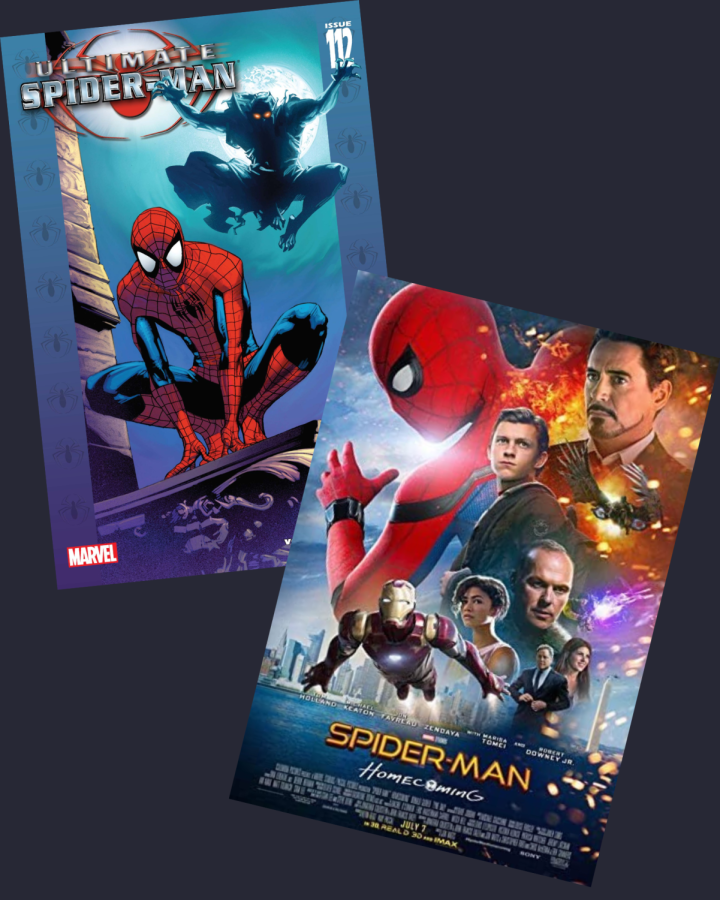Marvel: Comics vs. movies
May 17, 2022
With over 75 years worth of comics and a vast inventory of characters to choose from, Marvel Studios has successfully turned its relatively unknown properties into some of the biggest franchises in history. The Marvel Cinematic Universe (MCU) is a box office juggernaut, and it continues to expand with new people, places, and stories that comic fans have been enjoying for ages.
Much of their big-screen work doesn’t stray too far from the comics that they’re based on. Despite having been written decades ago, many of these stories retain much of their original tones, plots, and characters. However, not everything is lifted straight from the pages. Marvel Studios strives to make accurate adaptations of their beloved comics, but changes certainly aren’t out of the question.
Stories are often updated and reworked. Some of these changes are minor, while others can be real game-changers. We’ll look at some of the comic-to-screen changes to see what’s new, missing, or totally different from the source material that came before.
One example is the “Guardians of the Galaxy” films. Due to obscurity, the breakout success “Guardians of the Galaxy” received a heavy makeover to better fit the MCU — specifically with Star-Lord’s parentage.
Peter Quill was raised by Yondu Udonta. Current comic continuity is based on the film, so this is accurate. However, this version of Yondu is based on a character with the same name from the original team of Guardians, circa 1969. This team is no longer canon (due to some universe-altering hijinks) and only bears a physical resemblance to the Yondu fans know today. However, he is only Star-Lord’s adoptive father.
In the comics, intergalactic emperor Jason of Spartax is Star-Lord’s real father. For the “Guardians of the Galaxy Vol. 2” movie, his father is instead Ego the Living Planet — an ancient celestial being with crazy cosmic powers. This was chosen to further create a disconnect between Peter and his estranged pops.
Another example is Tom Holland’s rebooted Spider-Man which exhibits a handful of differences from the comics, as well as qualities, that are taken from various iterations of the character. Peter’s characterization in the movie “Spider-Man: Homecoming” mostly stems from the comic “Ultimate Spider-Man.” His youth and pupil-mentor relationship with Tony Stark are key aspects of the Ultimate series — Iron Man’s armor even takes direct inspiration from this run.
Peter’s friends have also been altered to avoid overlap with the Tobey McGuire and Andrew Garfield-led franchises. Harry Osborn and Gwen Stacy are absent. His closest friend is instead Ned Leeds — a renamed version of Ganke Lee, roommate and closest friend to Miles Morales, the second Spider-Man. It also appears that Mary Jane has been renamed Michelle Jones (or she’s an entirely new MJ altogether, still not too sure yet).
While his outfit design is reminiscent of classic Spider-Man, his high-tech suit is atypical — though modern suits like the Iron Spider and his outfit from the recent all-new, all different imprint both flaunt tech features, so it isn’t too out-of-the-ordinary. Surprisingly, this Spider-Man lacks any spider-sense, though the movie “Avengers: Infinity War” will change that. Aunt May is also much younger now compared to the comics and other movies.
Although the movies are quite different from the comics, they are still great movies to watch with the whole family.

